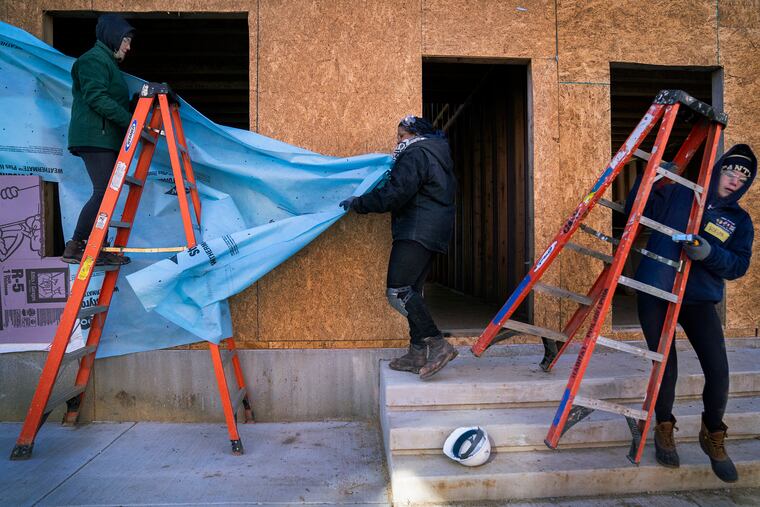A federal judge ordered President Donald Trump‘s administration to pause across-the-board cuts to AmeriCorps in response to a lawsuit filed by 24 states, including Pennsylvania, New Jersey, and Delaware.
The federal community service program that oversees thousands of volunteers was targeted in mid-April by the Department of Government Efficiency, which terminated grants and placed 85% of the agency’s employees on administrative leave, with layoffs set to take effect later this month.
Judge Deborah L. Boardman, who was nominated to the Maryland district bench in 2021 by then-President Joe Biden, issued an order Thursday preventing the Trump administration from “effectuating and enforcing” the cuts in the states represented by the lawsuit. Boardman also ordered that programs already impacted should be restored, grants reinstated, and AmeriCorps members returned to service, “if they are willing and able to return.”
The judge denied the Democratic-led states’ request to reverse the placement of AmeriCorps employees on administrative leave, or prevent the reduction in force for the agency’s staff.
“We just won in court again against the Trump Administration — this time to stop their unlawful decision to cut AmeriCorps programs that help communities respond to natural disasters, support seniors and veterans, and keep our trails clean across Pennsylvania,” Gov. Josh Shapiro said in a post on X Thursday.
Boardman explained her ruling in an 86-page opinion, stating that the cuts were not done properly.
“Before AmeriCorps could make any significant changes to service delivery, it first had to engage in notice-and-comment rulemaking,“ Boardman wrote. ”It did not.”
The opinion cites a few Pennsylvania programs, including one that supports veterans in Butler County, as examples of the impact AmeriCorps cuts could have on communities. The complaint argued that AmeriCorps members and volunteers have built trust that cannot be easily replaced.
“The abrupt exiting of members and erosion of trust built between service programs and the community will have a detrimental impact on these programs absent immediate injunctive relief,” Boardman said.
AmeriCorps did not respond to a request for comment.
The lawsuit, filed against AmeriCorps in late April, accused the Trump administration of efforts to “dismantle” the agency, and contended that the president does not have the constitutional authority to do so because AmeriCorps was established by an act of Congress.
Shapiro, New Jersey Attorney General Matthew J. Platkin, and Delaware Attorney General Kathy Jennings are listed as plaintiffs, along with officials from 21 other states.
The Trump administration argued in court filings that its actions did not trigger the requirements for a comment period according to the law and that the cuts wouldn’t cause irreparable harm, the legal bar required for an injunction before a case is fully litigated.
“Plaintiffs offer no concrete basis upon which to conclude that such dire consequences would obtain during the next couple of weeks,” the government said.
» READ MORE: DOGE’s sweeping AmeriCorps cuts leave Philly volunteer programs unsure if they will get promised funding
AmeriCorps was created in 1993 during President Bill Clinton’s administration as a domestic version of the Peace Corps. It has since supported projects throughout the nation.
Penn Serve — Pennsylvania’s designated state service commission for AmeriCorps — received nearly $18 million in federal grants for the year starting July 2024 to administer 28 programs, the lawsuit said.
New Jersey had $6 million in federal AmeriCorps grants terminated during DOGE’s purge, according to the statement from the state’s office of the attorney general. These cuts have affected a food pantry and homeless shelter, as well as addiction recovery and disaster-preparedness programs.
Delaware received nearly $1.5 million in federal grants to support 1,322 AmeriCorps volunteers for the 2024 fiscal year, according to the complaint. It has since lost more than $1 million of that funding.
Staff writer Beatrice Forman contributed to this article.



























